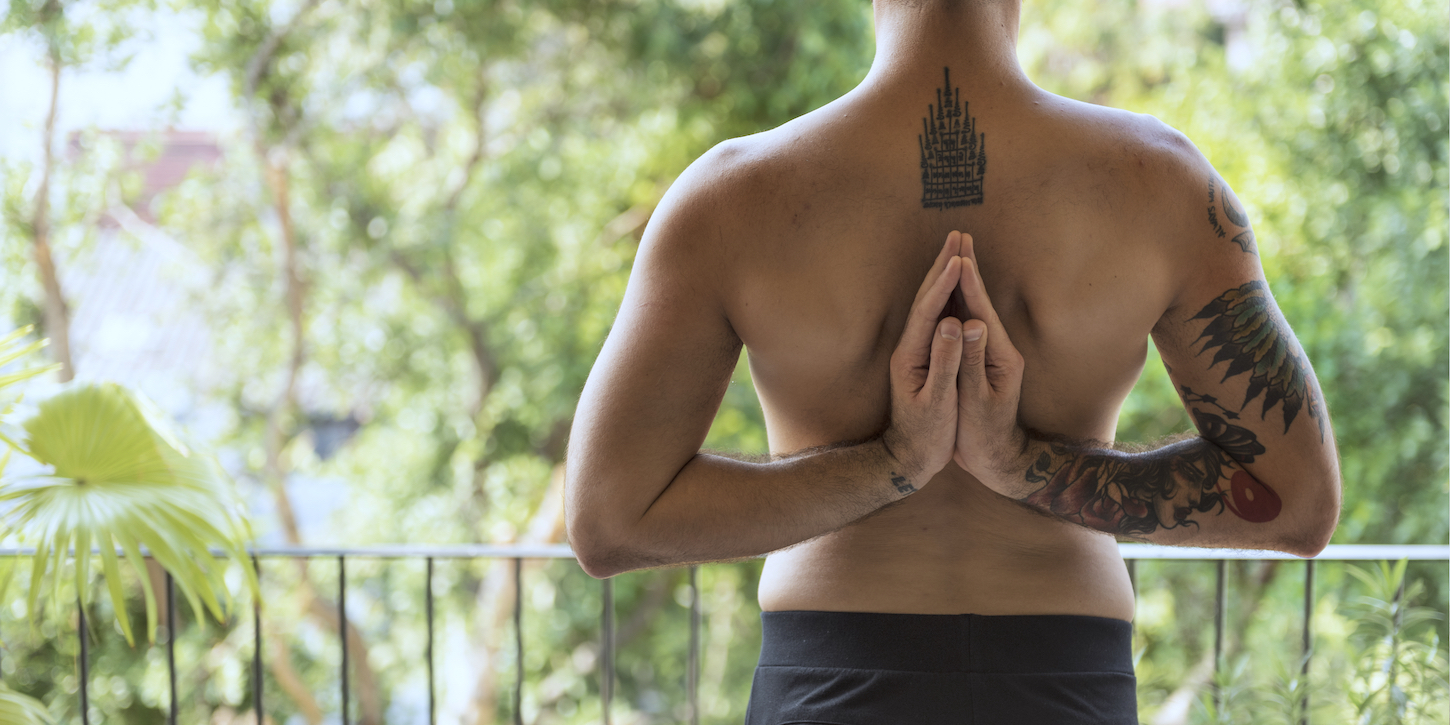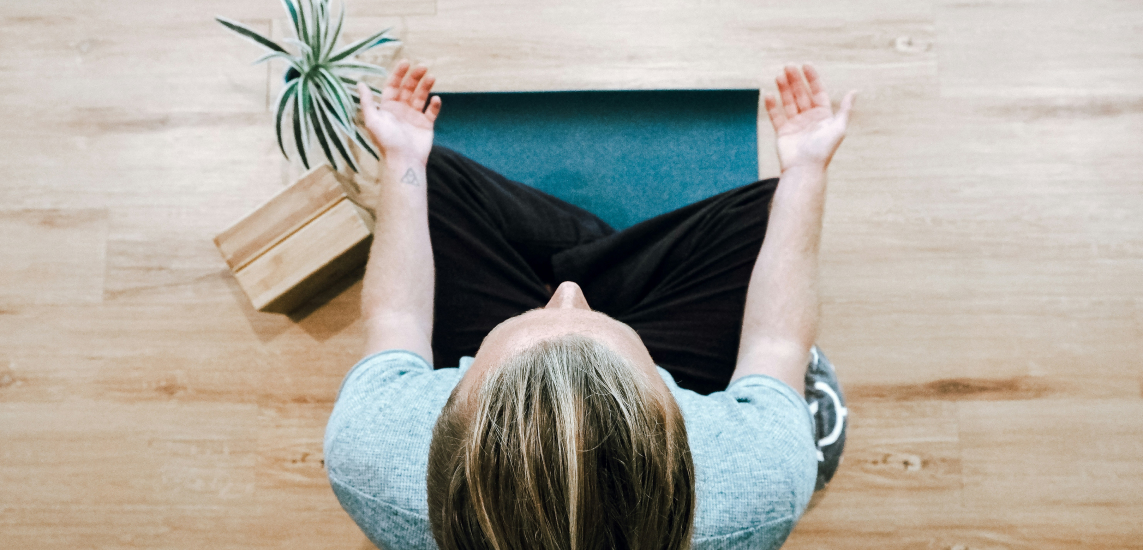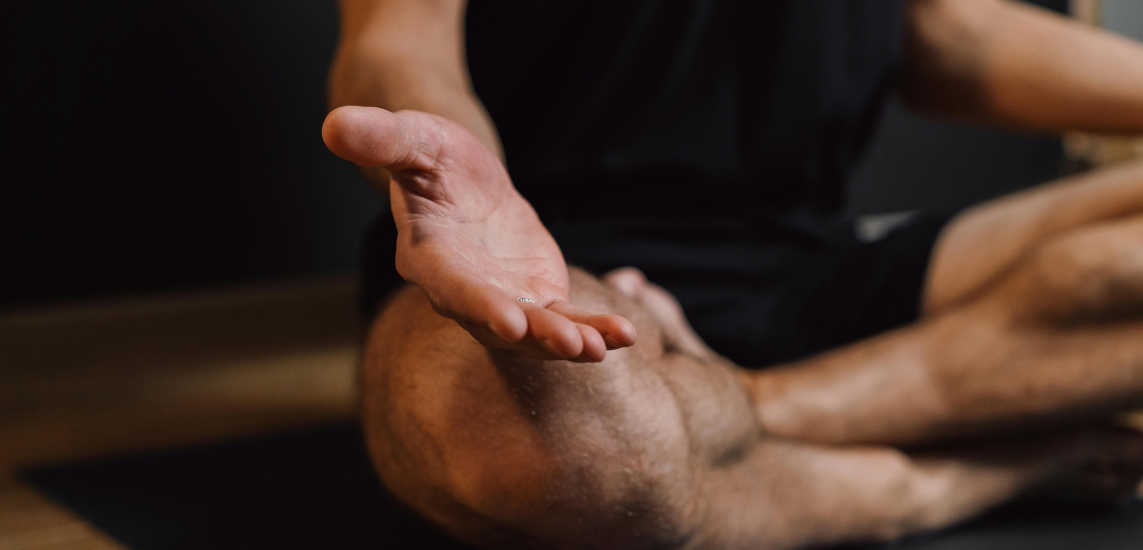If you rather listen than read, you can play the audio version below:
- Five Things That Make Your Yoga Practice Stronger Mark McCormick 10:02
5 Ways To Make Your Yoga Practice Stronger
I’m not exactly sure where I learned these five things to make a yoga practice stronger, but I have had them written down on an index card for many years, and I refer to them all the time in my classes. I’ll often recite them when people are in a very demanding or a very easy pose. I feel like these are the best times for reflection and self awareness. These five things are kind of in order, or let me say at least that the first three go together and the second two go together.
1. Intention
The first thing that will strengthen your practice is to have a sense of intention. You often hear yoga teachers open a class by asking people to set an intention. That’s because yoga is different than other kinds of exercise. A good yoga class includes a meditation and some breathing, but that’s not the end. These are means to an end. We practice for a reason and the reason can be varied or very individual.
Your intention could be a motivating word or a phrase, an affirmation, something you want to embody or call into your life. It can be a hope or a wish.
When I’m teaching kids, I ask them to think of their most personal wish, something that is theirs, and theirs alone. Something they never have to tell anyone, but of course they can if they want to.
You can make your practice a dedication, too, almost a form of prayer if you know someone who is suffering in some way and you want to reach them. If you do that, it’s a good idea to tell the person that you devoted your practice to them today, if that feels good and comfortable for you.
You might want to dive into one of Mark’s beautiful guided meditations before your next yoga asana practice to shift your attention inwards – follow Mark Mark McCormick on Insight Timer.
- Meditation On 'Enough' Mark McCormick 10:49
- Three Minds Mark McCormick 11:51
- The Gunas: An Experiential Reflection Mark McCormick 18:08
- The Body, The Mind, & The Spirit Have A Conversation Mark McCormick 15:27
- Subtle Body Meditation Mark McCormick
2. Focus
The second of these is focus. This is similar to intention, but different.
Focus is continual through the practice and it shifts again and again and again. Focus on this body part or this kind of breathing, focus on the alignment in a pose or the quality of your attention. Pretty soon, if your focus is sustained, you’ll notice that whatever problems you might have been preoccupied with before class kind of dissipate. You might not even think of them during the entire class because you’ve been focusing and concentrating – which is another kind of focus – so much during class.
Focus is a way of centering the mind during practice. The idea is that with practice over time, your focus will improve in all areas of your life. So, in this way an asana, which is a pose, is not just for the body, but also for the mind.
Read more: Discover how to deepen your awareness in asana practice. Teachers also often refer to drishti to focus the mind and find balance. Explore the meaning of drishti for the physical and the mind’s eye.
3. Knowledge
Knowledge is the third one. I love this one because it’s really so very broad. It can mean knowledge of your body, anatomy, philosophy, mythology, yogic literature, physics, or even your emotional state.
You see, yoga is a very broad term that includes all of these. Quite often when we’re going through class we might invoke several of these at once. For example, I will often emphasize the Western science of pathophysiology when I explain why breathing into the belly is so calming. It stimulates the vagus nerve, which triggers our parasympathetic nervous system, which is sometimes referred to as our rest and digest system. At the same time, there is an ancient tradition of agni, or fire, that’s associated with the belly. Or maybe I’ll mention how the kundalini tradition envisioned a serpent at the base of our spine, that with practice energetically lifts and distributes shakti, a sort of life force throughout the body.
All of these kinds of knowledge can coalesce into a yogic knowledge that draws from many, many sources and I love that about yoga. You can be thinking about different parts of your body and how your body works, and at the same time you could be envisioning some ancient myth or deity.
4. Experimentation
The next is experimentation. I really believe you must engage with this one to have a meaningful practice that grows over time. Honestly, you have to play a little. When a teacher says, “Try something,” or suggests an alternate way of being in the pose, check it out. Even if that might seem too easy or too hard, just break your pattern a little bit and try, play, experiment.
For example, in standing splits pose (Urdhva Prasarita Eka Padasana), I’ll encourage people to experiment with balance by first taking one hand behind the ankle and maybe both hands behind the ankle, just playing with the balance. I feel like every pose has wide potential for meaningful experiments.
We sometimes say that yoga is a science, and if yoga is a science, then your body is the lab. So what do we do in laboratories of science? We run experiments. We form little hypotheses and run the experiment and see how it goes. Then we adapt and adjust the experiment and adjust the hypothesis. And pretty soon we’ve created a science of yoga that is uniquely ours, but is drawing on some very rich traditions and knowledge that has been passed down through many generations.
Read more: In another article, yoga teacher Jenné Marley explains another four ways to amp up your yoga practice.
5. Effortless Effort
The last of these five is effortless effort. Sometimes I’ll say this phrase, “Effortless effort,” and then I’ll say, “This just means going to your edge, looking over the edge and then backing away from the edge.” So, we want to find that sweet spot in every pose. And this one, effortless effort, can be combined with some of the others too of course.
For example, if you’re in a forward bend like Janu Sirsasana – which is a seated pose with one foot on the upper inner thigh of the opposite leg, one foot is extended, the other leg is bent – you might be focusing hard with an intention… remember that’s #1… of staying in your breath and the full knowledge of how, if you flex your quadricep, your hamstring will release a little and then try and experiment by using a strap. Then with awareness and if you’re feeling good, you might go a little further than you usually go in the pose, but then you would back off immediately when sensation turns into pain. That means that you would settle in to that spot that is an effortless effort expression of the pose.
Read more: You’re three breaths into a deep chair pose, wondering how much longer, when your yoga instructor asks you to “embrace the discomfort.” No thank you, your mind says. Does this sound familiar? Discover the role of discomfort in yoga and meditation for personal and spiritual growth.
Thinking back on these five practices – intention, focus, knowledge, experimentation, and effortless effort – can you see how they’re not only good for your yoga, but might be applied to your life as well? Yoga is like that.



-1.jpg)



